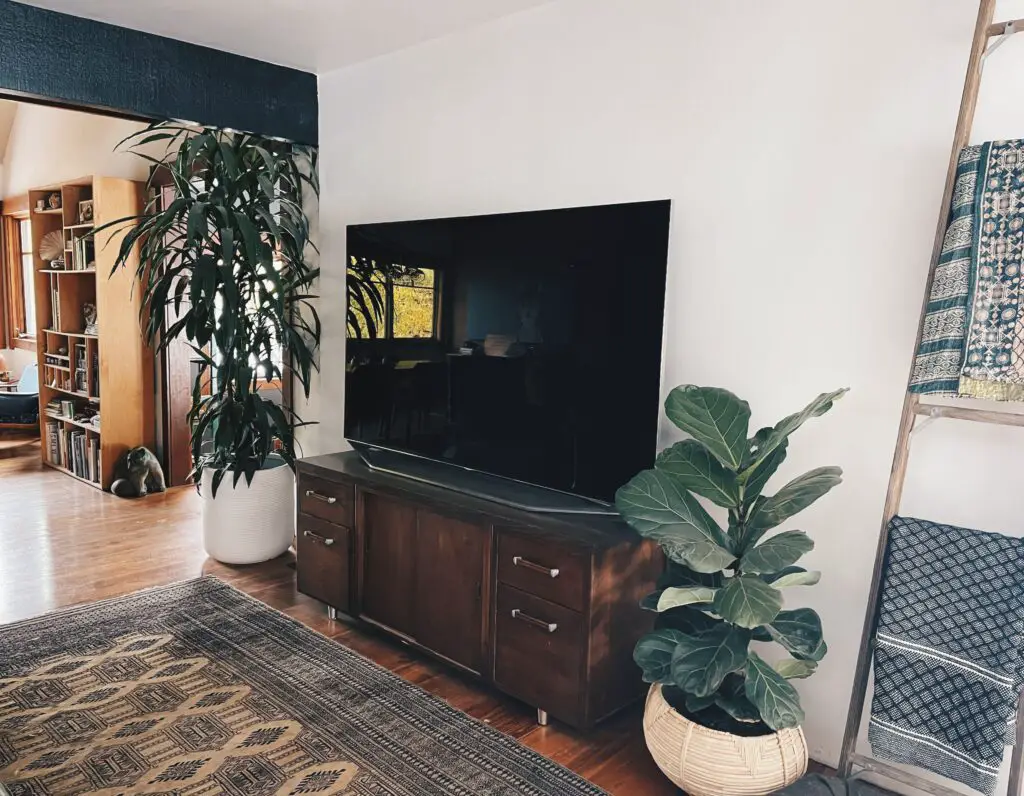How do you grow green plants without a green thumb? Choosing the right plants is the first step. Find indoor plants that will thrive in your home by assessing whether it usually is warm and humid or cool and dry. Next, look for plants that suit your style. Plants with leaves look great in traditional or French farmhouses, while succulents and colorful flowers add a pop of glam to modern farmhouses. That said, it all depends on what you like – as I have succulents in my own kitchen but big leafy green guys in our sunroom and living room.
Back in my earlier years, I was a master gardener and have always had an affinity for plants. So below, I’ve put together a list of my favorites. These plants are low maintenance, beautiful, and usually easy to find at a nursery or even your local Home Depot.
Contents
Maidenhair Fern
Maidenhair ferns thrive in moist or slightly humid environments. You don’t have to worry if you live in a dry climate – a little daily misting will do the trick. Keep the plant away from heating and cooling vents to prevent it from drying out. Follow this fern’s beauty regimen, and you’ll enjoy it for many years to come.

Succulent or Air Plant
Succulents and air plants are both easy to maintain. For succulents, watering amounts vary, and some can thrive in only a few hours of direct sunlight every day.
Ficus Danielle
Ficus Danielle is native to Australia and Southeast Asia. It thrives in a neutral climate and indirect sunlight. Adapting to your home takes a little time, but once it settles into its new spot, it’s a happy, low-maintenance tree.

Boston Fern
The Boston fern prefers a moist environment on the warmer side, just like the maidenhair fern. Indoors, it would look fabulous in a bathroom that receives some natural light. You can also hang it from a patio veranda. It only needs to be watered twice a week and moved inside when the weather turns cold.
African Violet
African violets are vibrant pops of color. They bloom all year round and thrive in warm climates. Place them on a windowsill or tabletop where they will receive lots of indirect sunlight. This may be the accent piece you’ve been looking for if you have a room full of whites and neutrals.

Herbs
Where can you get the freshest produce? From your very own kitchen! Window-sill-friendly containers can house herbs, those organic and fast-growing kitchen plant pals. Some of my favorites to grow in the windowsill? Basil, rosemary, mint, parsley, dill, or cilantro.
A few tips for keeping these babies alive and thriving…
- A minimum temperature of 55°F is needed for plants, and most of them are happier with a little bit more warmth. In the winter, move houseplants away from cold windows and areas near outside doors if you live in a cold winter climate.
- It is not good for plants to be exposed to cold drafts (or extremely hot drafts). Keep plants away from active heating or cooling vents. However, plants benefit from additional air circulation (such as a slow-moving fan) to prevent pest infestations or fungus growth, especially if you have plants grouped closely together.
- Does the soil seem too dry or too wet? Overwatering is the most common mistake made – more plants have died from overwatering than being too dry. Your plant should only be watered when it appears to need it (visibly drooping) or if the soil feels dry to the touch – stick your finger in the dirt to tell! Plants require less watering in the fall/winter when they are dormant and more watering during their active growth period in spring/summer. In an area that receives direct sunlight, your plant will need more frequent watering than one that receives indirect light only.
- Trim away any dead leaves or spent blossoms from your plants. Debris creates a home for pests. You can check for possible pest infestations by looking for webs or small white fuzzy spots on or under the leaves along the stems. Know the common pest/disease symptoms so you can deal with any problems early before they spread to all your plants. If you find a pest issue, isolate the plant until it is clean and healthy again.
- Make it a habit to observe each plant every week. Does it seem happy? Is it growing toward the light? To ensure the plant grows evenly, quarter-turn it every time you water it. Are the leaves a strange color? It might need a different location or more or less light.



Thank you. Would love to hear more